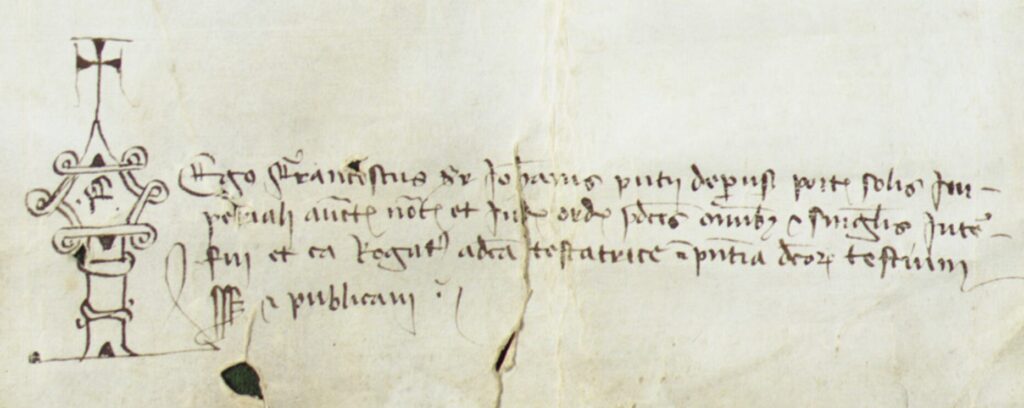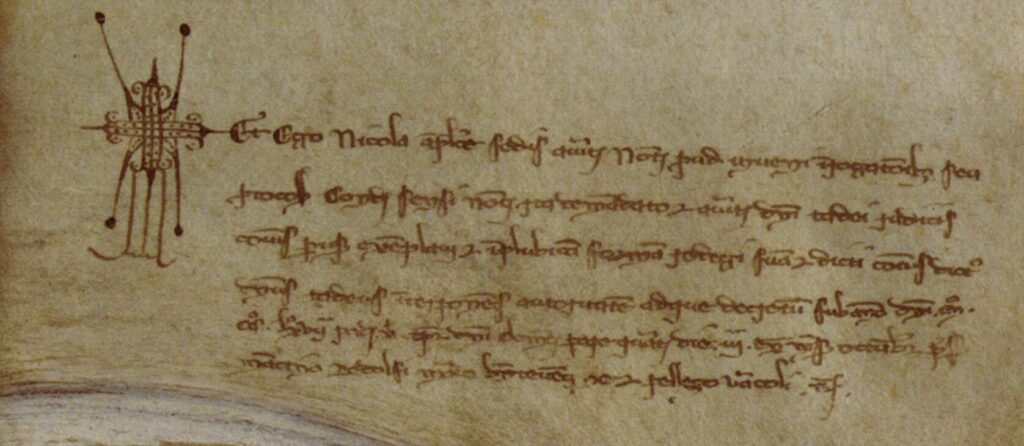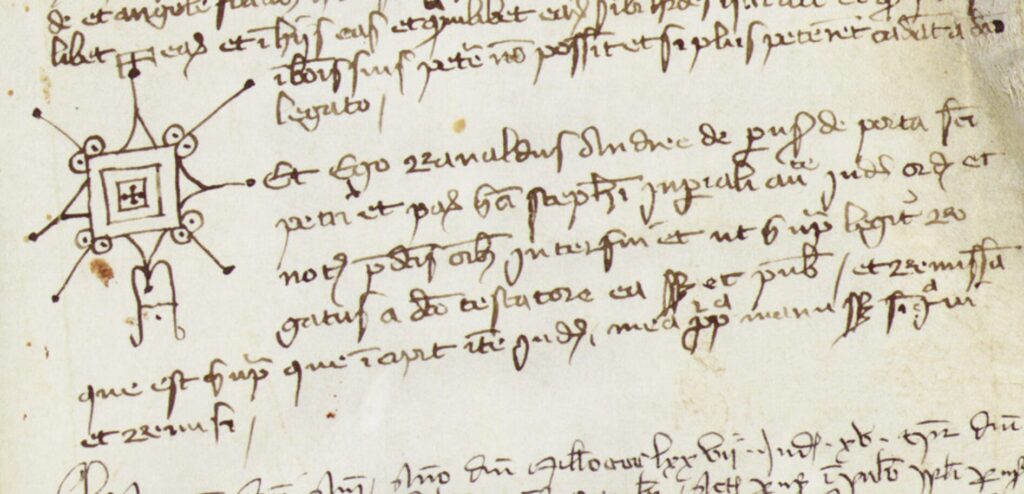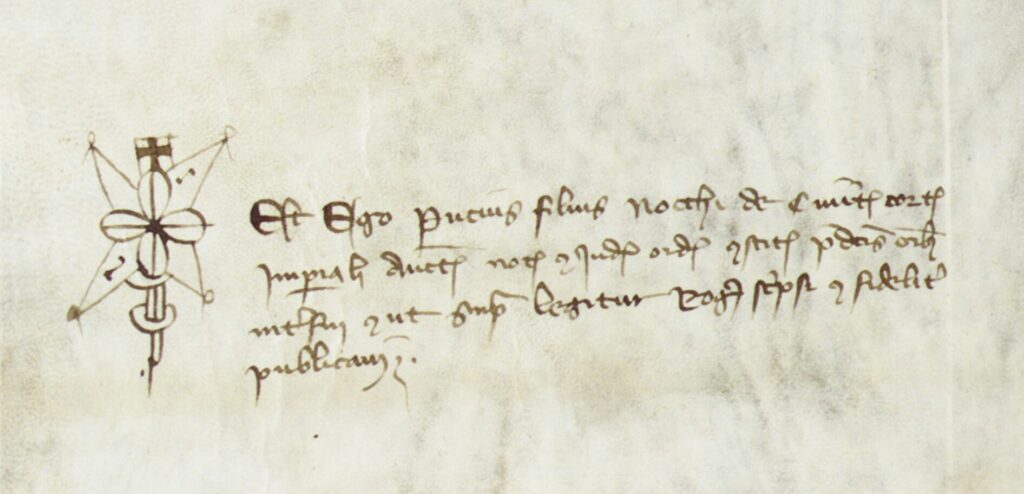
All the documents our project looks at have one thing in common – they were drawn up by a notary.
In medieval Italy, notaries played a crucial role in the personal, commercial and civic lives of every individual. They were responsible for drafting, authenticating, and preserving official documents such as contracts of all kinds, deeds, leases, judicial acts and testaments. Trained in legal Latin, they were licensed by civic or ecclesiastical authorities, and drew up documents in their own premises, in ecclesiastical institutions or even on the road.
Instead of a simple signature at the end of a document, each notary employed a specific graphic symbol. This was the signum tabellionis—or notarial mark. The often elaborate, distinctive personal mark was designed to be both unmistakable and difficult to forge. It usually combined the notary’s initials or name with decorative flourishes, crosses, or religious motifs, and sometimes, personal symbols like stars, keys, or animals. Surviving examples reveal a remarkable variety of designs, reflecting regional styles.

The above example shows the signum of Nicolaus, an apostolic notary. It is exceptionally detailed, combining a cross, curls, dots and lines.

Notaries like Ranaldo di Andrea, also a judge, who drew up the testament of Martino del fu Ugolino on 3rd September 1373 (pictured above), usually drew their signum near a concluding formula. In this case, Ranaldo uses the formula “Ego…interfui” to show his presence, as well as “rogatus a dicto testatore” (“asked by the aforesaid testator”).

Puccio di Nocchi, a notary from Cortona, who drew up the will of Buco Orlandi di Bacialla in August 1335, used a signum that recalls a single, blooming flower on a stem surmounted by a cross.
In an age when literacy rates were low and public confidence in written records relied heavily on visible signs of legitimacy, the signum acted as a visual guarantee of a document’s authenticity. This was crucial for testaments, as they both provided for the disposition of an individual’s worldly goods and managed his or her route to salvation.
